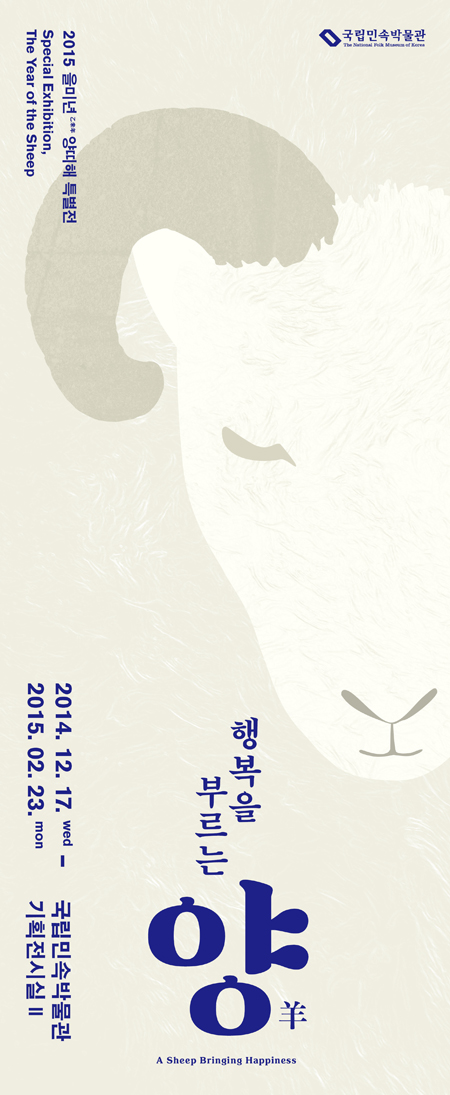Introduction
This exhibition represents both a symbol of and the meaning of sheep in Korean culture as we approach the Year of the Sheep in 2015. Sheep were hardly seen among livestock in Korea due to the absence of proper conditions to raise them until modern times. Thus, for Koreans, sheep are considered a friendly animal, but they are regarded as strange at the same time. It is important to note that, before the 20thCentury, sheep were seen as long-tailed gorals or goats in Korean folklore.
The eighth period in the twelve-year zodiac cycle is named after the goat. In addition, goats are considered as guards of tombs and stand for goodness and gentleness.
We wish that the Year of the Sheep will be a peaceful and prosperous year, symbolized by the image of sheep strolling leisurely on green grass.
Part I. The Twelve-year Zodiac Cycle and Goats
The twelve-year zodiac cycle has been used since ancient times in China and each year is assigned the names of animals as kinds of labels. In Korean folklore culture, those 12 animals were used as grave goods and they also guarded the outside and inside of tombs since the United Shilla period. In Buddhism, they were seen as guards of the Buddha's teaching.
As goats represent the eighth year of the twelve-year animal cycle, they took on the meaning of the time period between 1:00 p.m. and 3:00 p.m., and the symbolizing in the middle in terms of geographical direction between due south and due east.
Part II. Sheep(Goats): A Lucky Sign
Traditionally, sheep(goats) have been viewed as good-natured and mild-mannered animals—they travel comfortably together in herds and can be well-trained by a shepherd. In addition, young goats fall to their knees when their mother feeds them milk. Their behavior is seen as reflecting that of an obedient animal. Therefore their reputed attributes and symbolism are associated with the positive in the Chinese words (or characters) meaning "Goodness", "Loyalty", "Beauty" and "Good Fortune" and sheep(goats) also have been viewed as a lucky animals possessed of many good things.
Part III. Sheep in Everyday Life
The history of raising sheep goes back to the Koryo Dynasty, a custom imported from the Jin(1115-1234) and Liao(915-1125) Dynasty in China. In the Joseon Dynasty, sheep played an important role in ritual ceremonies, but the raising of sheep was not wide-spread at the time. Starting in the 1930s, raising sheep became popular and using sheep’s wool in the textile industry was very common during the 1950's and 1960's in Korea. The physical appearance of sheep, especially white sheep, conveyed warmth and appealing furriness in that period.
Goat, Another Name of Sheep
The word "sheep" is applied to both species, long-tailed gorals and ovis aries. In general, long-tailed gorals refer to goats. Their physical appearance is somewhat similar to each other but they are totally different species. According to biological classification, long-tailed gorals are classified as "naemorhedus Caudatus" and goats are classified as "capra". Ancient Koreans did not distinguish clearly between the two species, between both sheep and goats due to this similarity of appearance. In addition, sheep are not found among livestock in ancient Korean times. As we know, the image of sheep in the modern times is the specie of ovis aries.
Sheep in Literature
The image of sheep in modern Korean literature has been changed in various ways with the passage of time, from the Japanese invasion in 1910 to the 1950's and 1960's. In Korean literature, the most widely viewed image of sheep is one of softness as well as one symbolizing friendliness, peace and female sensibility.



